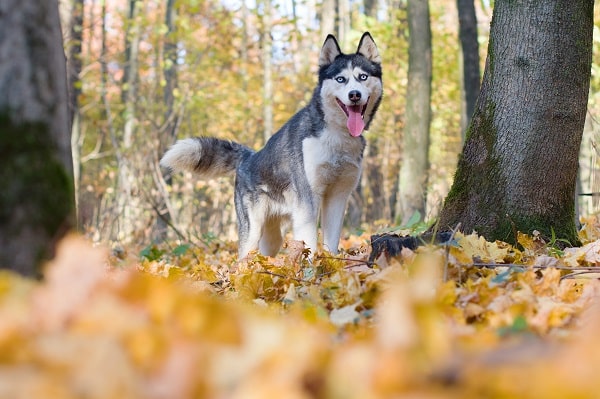When you look at two different dog breeds side by side, it’s quite clear that while they both might be dogs, they have major differences. Whether it is the apparent difference in appearance or even a difference in size and temperament, these characteristics are what make each unique. But what may not be obvious at first sight is how different dogs have different levels of trainability. And if you’re looking to adopt a new pup, it pays to understand which are the most difficult dog breeds to train and why.
Contents
The Process Of Training A New Dog

Training a new pup can be an intimidating yet rewarding experience. It requires patience, consistency, and commitment in order to achieve the desired results. First and foremost, it’s important to determine what kind of training you’d like to do with your pup and ensure everyone involved is on the same page before starting. It’s useful to decide what specific commands and behaviors you wish to practice and learn with your new companion–such as sit, stay, come, heel – so that they become common responses whenever the command is given.
Additionally, setting clear boundaries and expectations ahead of time can help set up positive reinforcement techniques for both yourself and your furry friend. Training is ultimately an ongoing process; although milestones are reached when first mastering basic commands and behaviors, a consistent routine helps ensure that your pup remains accustomed to following directions in different scenarios down the road.
The Most Difficult Dog Breeds To Train
As simple as it may sound in theory, not all dogs are the same in terms of trainability. Through genetics and selective breeding, certain breeds have been developed over time to be more independent or difficult to train than others. Here is a list of some of the most challenging canines to work with:
Bullmastiffs

Bullmastiffs are a strong-willed breed of dog and can prove difficult to train if you don’t take the proper steps and techniques. Patience is key when training a bullmastiff, as they must first learn to recognize a particular command before they can adequately respond. Along with patience, staying consistent in your approach is another key factor. Bullmastiffs will pick up on inconsistency and, as a result, may become confused or unmotivated to obey commands.
Finally, an essential factor in training a bullmastiff is providing them with positive reinforcement. Giving them rewards such as verbal praise or treats when they perform desired behavior is best. If you implement these approaches effectively, you will be well on your way to having a trained bullmastiff that adheres to their instructions.
Rottweilers

Rottweilers are a complex breed of dog, and it takes someone dedicated and knowledgeable to successfully train them. This is because they are truly independent thinkers who can often be stubborn and defy authority, making them difficult to manage. Additionally, Rottweilers require consistency and repetition in training, or else they won’t pick up the necessary behaviors.
Without the right tools and attitude, attempts at training a Rottweiler can quickly become frustrating. However, despite these challenging aspects, with care and patience, Rottweilers can bond strongly with their owners and learn valuable life skills.
Siberian Huskies

Siberian Huskies are a beautiful, highly-intelligent breed of domestic dog renowned for their thick fur coats and striking blue eyes. However, they can also be notoriously difficult to train due to a number of personality traits. For one thing, they have an innate drive to wander and explore; this means that their attention is easily pulled in the direction of new sights and sounds, making it hard to keep them focused when trying to teach them tricks or obedience commands.
In addition, given their strong hunting instincts, Siberian Huskies often have difficulty understanding boundaries imposed by humans – during training sessions, these canine adventurers may decide at any moment that they’d rather search for prey instead of wanting to obey. So when training Siberians, it is essential to be firm and consistent in order to communicate clear expectations – only then will they gradually learn the desired behaviors.
Beagles

Beagles are known to be independent, free-spirited dogs. These traits make them a pleasure to own; however, they make Beagles difficult to train. This bread usually responds only when they feel like it, so you’ll often find yourself feeling like you don’t have your dog’s full attention. In addition, due to their strong scenting abilities and short attention spans, Beagles are often easily distracted while training and will wander off chasing scents or simply become bored.
As a result, it is crucial for an owner of a Beagle to remain patient and consistent in their training approach and ensure that their dog stays engaged with the task at hand by providing treats for positive reinforcement as well as breaks when needed. With consistent effort, even the most stubborn of Beagles can learn obedience commands over time.
Basset Hounds

Basset Hounds, with their big ears, floppy bodies, and lovable, furry faces, are undoubtedly appealing; however, like all the other dogs on this list, they can be quite a challenge when it comes to training. Unlike some breeds, which are easy to train and respond quickly to learning commands, Basset Hounds tend to be more stubborn and willful than most. They may pick up on instructions but often won’t remember them for very long or take their time following through.
This is primarily due to their independent nature and instinctive need to explore. It’s important to remember that the physical limitations of these dogs can also play a role in training challenges; they may do better with shorter periods of practice and loose-leash walking as opposed to intensive running drills or agility courses.
Bulldogs

Bulldogs are generally thought of as friendly, loyal dogs – which they often are! But their strong-willed nature can lead to a lot of trouble while training. Bulldogs tend to be a bit stubborn and much less eager to please than other breeds, especially during puppyhood. Training should focus on positive reinforcement and consistency, as bulldogs can quickly become unmotivated by repetitive tasks.
Furthermore, having an experienced trainer or enrolling your pup in obedience classes may ensure more success. Finally, it’s important to remember that training is a long-term commitment; don’t expect overnight success when teaching your bulldog basic commands or skills. With patience and determination, however, owners can look forward to a well-mannered and obedient furry companion.
Even Difficult Dog Breeds To Train Are Worth The Effort!
Although this list may seem like its only focuses on the negatives of these breeds, it’s important to note that they are not inherently bad dogs. All of the above-mentioned canines have their own set of unique traits and qualities that make them wonderful companions when properly trained. With understanding, patience, and consistency, any dog – no matter its breed – can be taught obedience commands. In short, just because they wound up on the list of the most difficult dog breeds to train doesn’t mean they aren’t worth the extra effort!


